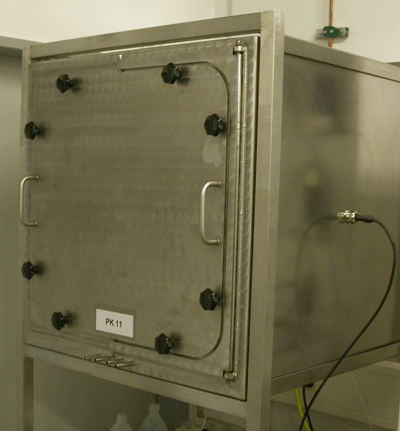Emission test
for volatile organic compounds (VOC’s)
in textile floor coverings
As a result of improved building insulation and consequently the increased incidence of airtight buildings, there is less exchange between used indoor air and fresh outdoor air. Therefore it is essential that emissions are limited from the outset to remove any possibility of increased indoor air pollution. Part of the extensive product testing work carried out by GUT is to test the emissions in textile floor coverings.
Textile floor coverings should only have low levels of emissions
Indoor air pollution can be caused by a complex mixture of substances such as fibres, particles, radon, microbiological substances, allergens, tobacco smoke and other combustible products. In addition, indoor air also contains formaldehyde and VOC’s such as acetone, benzene, toluene, cyclohexane, n-hexane, and other solvents that can be emitted by normal building materials such as paints, adhesives, furniture, and any other decorative items. As a result of relatively recent improvements in building insulation, the exchange between stale indoor air and fresh outdoor air has been significantly reduced, and as a result, the concentration of indoor pollutants has increased. It is therefore increasingly important to only use building materials with low emissions. This is particularly true for recently installed floor coverings which usually account for the largest single area of a room. Equally important are the materials (adhesives) used during installation, as these should also have “very low emissions”.
GUT-tested carpets are low in emissions
When you buy a textile floor covering which has the GUT label you can be reassured that it will have very low emissions. This means that the Indoor air Quality standards as set by the various international and national building certification schemes are met. Therefore, by choosing a carpet with the GUT label, either for commercial or residential use, you know that it has been tested and classified as having low emissions. In the following you will find a list of the limit values that must be complied with during the GUT emissions test for carpets.
GUT limit values for VOC emissions
VOC limit values after 3 and 28 days

How are building products tested for emissions?
The test chamber method
The test chamber method has been well established over many years and is now the standard method to determine emissions from building products. Details of the procedure can be found in the EN 16516 which is based on a series of previous standards, such as the ISO 16000 series.
The evaluation of VOC emissions is carried out within the framework of GUT product testing on the basis of the AgBB scheme. This was was developed by the Committee for Health-related Evaluation of Building Materials, and in turn is based on the European research report “Indoor Air Quality and its Impact on Man – Evaluation of VOC Emissions from Building Products, Solid Flooring Materials“. in order to evaluate VOC emissions, the GUT system uses harmonised European LCI values (lowest concentration of individual substances of interest). In the absence of such values, the corresponding NIK values of the AgBB are used if available. The LCI values were developed on the basis of careful risk assessment and taking into account the special requirements for elderly, sick people and small children.
Details of this can be found on the relevant websites of the Federal Environment Agency.

Stainless steel chamber for determining VOC emissions